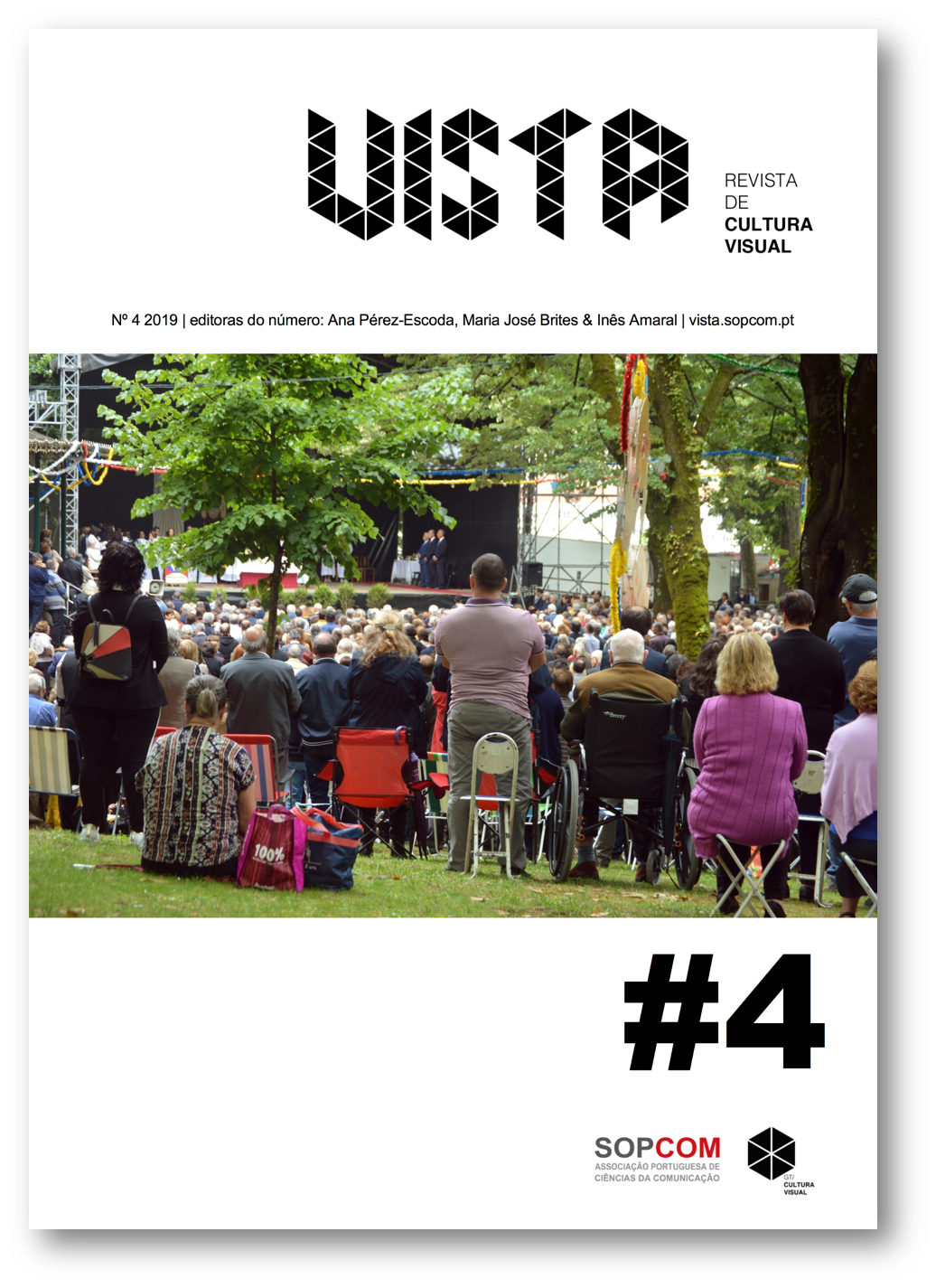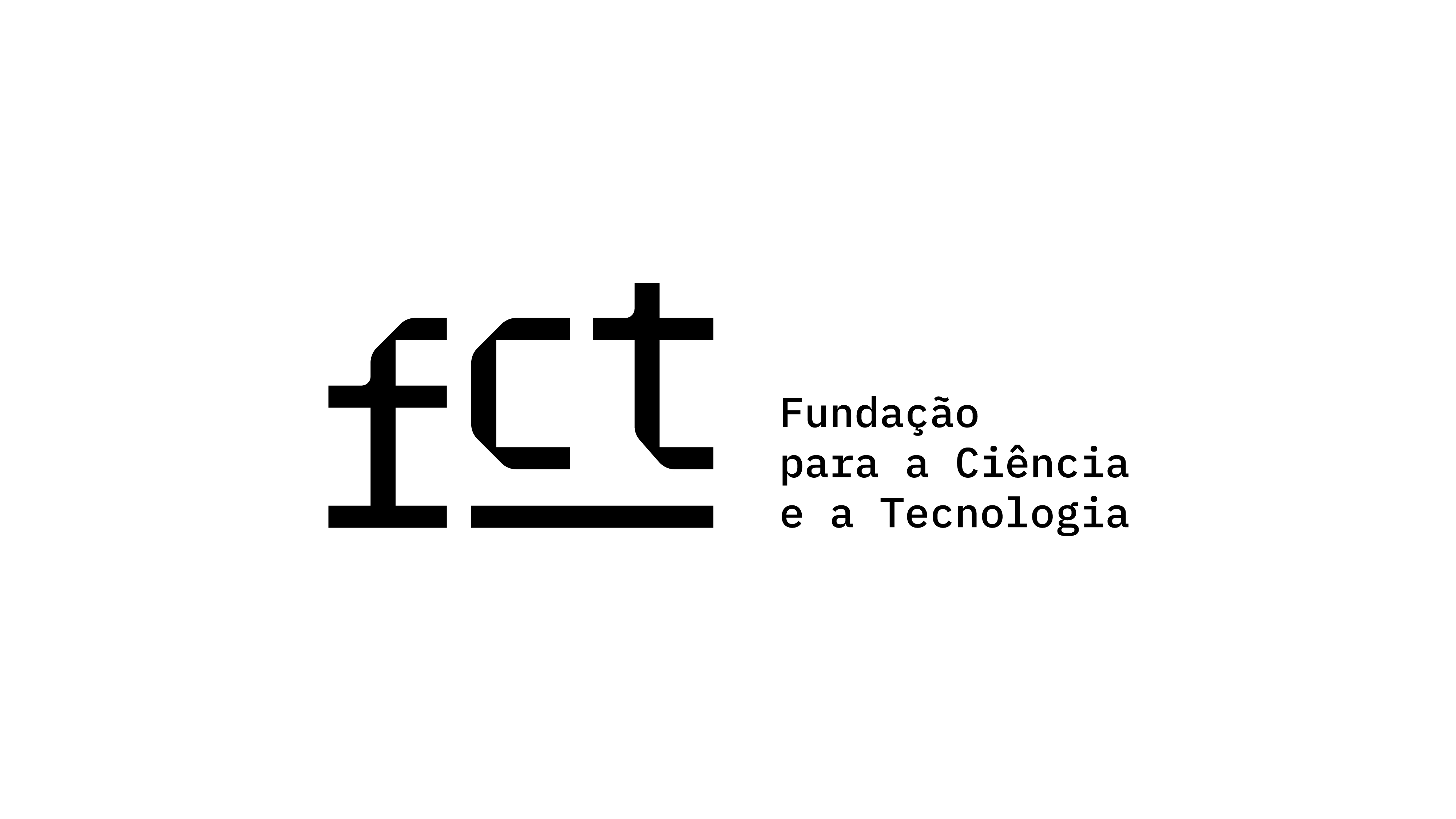The selfie generation: a transformation of visual social relationships
DOI:
https://doi.org/10.21814/vista.3019Palavras-chave:
visual, espaço, performance, proximidade, intimidade, fotografia, comunicação visual, tecnologia móvelResumo
A geração selfie é um termo comumente usado para descrever pessoas nascidas depois de 1981 devido à suposta proliferação de selfies que elas fazem diariamente. Se as selfies realmente definem uma geração de pessoas, elas requerem consideração enquanto uma evolução da interação social. Este estudo interdisciplinar centra-se na fotografia como desempenho de olhar envolvendo as relações sociais entre as pessoas. Pergunto: como podem as selfies sugerir uma transformação das relações sociais quotidianas? A selfie como performance fotográfica ativa é examinada pela observação etnográfica ilustrativa. Então, como objeto fotográfico performático, a selfie é examinada como comunicação visual interativa (Kress & Van Leeuwen, 2006; 2009). Finalmente, os espaços performativos da selfie em processo (da performance inicial, ao objeto e como é partilhado e se move entre espaços privados e públicos) são examinados como relações de perceção proxémica (Hall, 1966). Para a geração selfie, os espaços privados nas relações sociais talvez tenham evoluído não apenas por causa de mudanças na tecnologia fotográfica, mas também por novos espaços de socialização, nos quais os contextos público e privado são muitas vezes indistintos e não fixados.
Downloads
Referências
Andreallo, F. (2017). The semeful sociability of digital memes; visual communication as active and interactive conversation. PhD thesis, University of Technology, Sydney. Retrieved from: https://opus.lib.uts.edu.au/handle/10453/120273
Barthes, R. (1981). Camera Lucida. Reflections on photography. New York: Hill and Wang.
Baym, N., & Senft, T. (2015). What does the selfie say? Investigating the global phenomenon, International Journal of Communication, 9,1588-606.
Burgess, J. (2007). Vernacular creativity and New media PhD Thesis, Queensland University of Technology, Queensland, Australia.
Farman, J. (2012). Mobile interface theory; embodied space and locative media. New York: Routledge.
Foucault, M. (1979). Discipline and punish; the birth of the prison (‘Panopticism’). New York: Vintage.
Frosh, P. (2001). The public eye and the citizen-voyeur; Photography as a performance of power. Social semiotics, 11(1), 43-59.
Frosh, P. (2015). The gestural image: the selfie, photography theory, and kinesthetic sociability. International Journal of Communication, 9, 607-28.
Ehn, P., Binder, T., Eriksen, M. A., Jacucci, G., Kuutti, K., Linde, P., & De Michelis, G. (2007). Opening the digital box for design work: supporting performative interactions, using inspirational materials and configuring of place (pp 50–76), in Streitz et al. (eds). The disappearing computer: interaction design, system infrastructures and applications for smart environments. Berlin/Heidelberg: Springer.
Fischer-Lichte, E. (2008a). Sense and sensation: exploring the interplay between the semiotic and performative dimensions of theatre. Journal of Dramatic Theory and Criticism, 22(2), 69–81.
Fischer-Lichte, E. (2008b). The transformative power of performance: a new aesthetics. London: Routledge.
Haggerty, K. (2006). Tear down the walls: On demolishing the panopticon, in Lyon (ed.). Theorising surveillance: The panopticon and beyond (pp. 23-45), Willan Press.
Hall, E. (1966). The hidden dimension. Garden City, New York: Doubleday.
Highfield, T., & Leaver, T. (2016). Instagramatics & digital methods; studying visual social media, from selfies and GIF to memes and emoji. Communication Research and Practice, 2(1), 47-62.
Kress, G., & Van Leeuwen, T. (2001). Multimodal discourse: the modes and media of contemporary communication. New York: Oxford University Press.
Kress, G., & Van Leeuwen, T. (2006 [1996]), Reading images. The grammar of visual design. New York: Routledge.
Mann, S. (2004). Sousveillance: Inverse Surveillance in Multimedia Imaging. In Proceedings of the 12th annual ACM international conference on Multimedia (pp. 620- 627). ACM.
Markham, A. (2009). How can qualitative researchers produce work that is meaningful across time, space and culture?, in Baym & Markham (Eds.). Internet Inquiry, Conversations about Method (pp. 131-155). Thousand Oaks: Sage.
Metz, C. (1974). Film, Language; a semiotics of cinema, trans. New York: Oxford University Press.
Mulvey, L. (1981)., ‘Afterthoughts. In Visual and other pleasures (pp. 29-38). Palgrave Macmillan, London.on ‘Visual pleasure and Narrative cinema ‘Inspired by King Vidor’s Duel in the sun (1946)’, Visual and other pleasures, pp. 29-38.
Mulvey, L. (1989). Visual pleasure and narrative cinema. In Visual and other pleasures (pp. 14-26). London: Palgrave Macmillan.
Mitchell, W.J.T. (1994). Picture theory. Chicago: University of Chicago Press.
Mitchell, W.J.T. (2013). Showing seeing: a critique of visual culture, in Mirzoeff (ed.). The visual culture reader (pp. 86-101), London/New York: Routledge.
Monahan, T. (Ed.). (2006). Surveillance and security: Technological politics and power in everyday life. Taylor & Francis.
Pollock, G. (2018). Modernity and the Spaces of Femininity. In N. Broude & M. Garrard (eds), The Expanding Discourse (pp. 244-267). London: Routledge.
Sekula, A. (1989). The body and the archive, in Bolton (ed.). The contest of meaning; critical histories of photography (pp. 342-88), Cambridge: MIT press.
Warfield, K. (2015) ‘Why I love selfies and you should too (damn it)’, paper presented to the Public lecture at Kwantlen Polytechnic University, 26 March 2014. Published on YouTube, 2 April 2014. Retrieved from: https://www.youtube.com/watch?v=aOVIJwy3nVo.
Williamson J., Hansen, L. Jacussi, G., Light, L., & Reeves, S. (2014). Understanding performative interactions in public settings. London: Springer verlag.
Zappavigna, M. (2016). Social media photography; construing subjectivity in instagram images. Visual communication, 15(3), 1-22.
Downloads
Publicado
Como Citar
Edição
Secção
Licença

Este trabalho encontra-se publicado com a Licença Internacional Creative Commons Atribuição 4.0.
Os autores são titulares dos direitos de autor, concedendo à revista o direito de primeira publicação. O trabalho é licenciado com uma Licença Creative Commons - Atribuição 4.0 Internacional.












